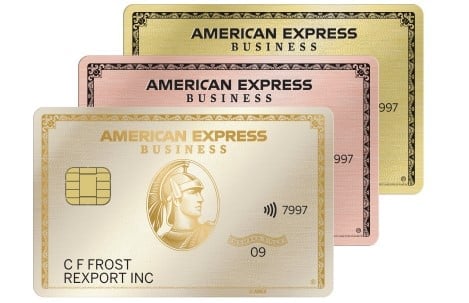Trade Credit: What It Is, Advantages and Disadvantages
Trade credit can be used to improve cash flow and build relationships with vendors or suppliers.
Many, or all, of the products featured on this page are from our advertising partners who compensate us when you take certain actions on our website or click to take an action on their website. However, this does not influence our evaluations. Our opinions are our own. Here is a list of our partners and here's how we make money.
What is trade credit?
Trade credit is a short-term financing agreement that allows a customer to buy goods or services from a supplier and pay for them at a later date. Trade credit is also referred to as vendor credit or net terms.
This type of financing is commonly used by business-to-business (B2B) companies. Trade credit can be a good option for managing cash flow and building business credit.
How much do you need?
We’ll start with a brief questionnaire to better understand the unique needs of your business.
Once we uncover your personalized matches, our team will consult you on the process moving forward.
How does trade credit work?
Trade credit doesn’t function like a traditional small-business loan. Instead of a formal agreement between a lender and a borrower, this type of financing is a more informal credit arrangement between a customer and a supplier. In a trade credit agreement, the supplier agrees to provide goods or services and the customer agrees to pay for them at a later date.
Typically, trade credit is offered for 7, 30, 60, 90 or 120 days. These payment terms are often referred to as “net + number of days.” For example, a net 30 agreement means you have 30 days to pay for the goods you purchase.
Some suppliers may also offer a discount to encourage customers to pay ahead of the due date. For instance, a vendor may offer a 3% discount if you pay within seven days of the 30-day payment term. This arrangement is then referred to as 3/7, net 30.
Although trade credit is considered to be a 0% interest type of financing, the vendor may charge fees if you don’t pay by the agreed-upon date. Like the price of goods and payment terms, these late penalties are specified in the trade credit agreement and/or invoice.
Responsible use of trade credit (i.e. making on-time payments) can be used to build your business credit. Some suppliers automatically report your payment history to the business credit bureaus. If they don’t, you can list them as a trade reference on your credit account and Dun & Bradstreet (one of the commercial credit bureaus) will reach out to collect your trade data.
Trade credit example
Here’s a more detailed example of how trade credit works:
You connect with a supplier. You find a supplier who sells T-shirts at $2.50 per shirt. You decide to buy 1,000 T-shirts.
The supplier offers you trade credit. You agree on the supplier’s sales price, as well as the payment terms: 2/10, net 30.
The supplier sends you an invoice. The supplier sends you an invoice with the agreed-upon price and terms. The invoice also details the supplier’s late fee policy. For every day past the due date, the supplier will charge an additional $20 fee.
You pay the supplier for your T-shirt order. If you pay the supplier within 10 days, you receive a 2% discount on the sales price of the T-shirts. You’ll pay $2.45 per shirt (instead of $2.50) for a total cost of $2,450. If you pay on day 30, you’ll pay the standard total of $2,500 for your order. Remember that if you pay late, you’ll incur the $20 late fee. If you pay five days late, for instance, you’ll pay an extra $100 in fees.
How to get trade credit
If you’re interested in trade credit, you can ask your suppliers or vendors about the options they offer. Keep in mind that even if a supplier does provide trade credit, it may not be willing to offer it to your business.
Although trade credit may not have a formal underwriting process (which you would see with more traditional debt financing), a supplier will still evaluate your business to determine if it wants to extend credit to you.
A supplier might consider your:
Credit history. The vendor will likely prioritize your business credit score over your personal credit, as the former incorporates your payment history to creditors and vendors.
Business finances. The supplier may ask to see financial statements to look at your available cash flow and how you turnover inventory.
Payment history with them. If you’ve worked with the supplier before, the company will look at your history to evaluate the possibility of you paying late, or not at all.
Payment history and relationship with other suppliers. Although these details are covered in your business credit report, the supplier might ask for references in order to reach out directly to suppliers you’ve worked with in the past.
Suppliers will also use these factors to determine the specific payment terms it’s willing to offer. If you have an excellent payment history, the supplier may be more likely to agree to longer terms. The payment terms you receive can also vary based on industry, the size of the purchase and how perishable the goods are.
When a supplier agrees to a trade credit arrangement, it may simply send an invoice as a record of your agreement. Some suppliers, however, will require you to sign a promissory note.
A promissory note is akin to a legal “IOU.” This type of document can help protect a supplier from nonpayment. Without a promissory note, a supplier could be stuck with bad debt (i.e. debt that can’t be collected). Although bad debt can be written off on taxes, it can hurt a supplier’s finances.
Pros and cons of trade credit
The benefits and drawbacks of trade credit differ for customers compared to suppliers.
For customers
Can help cash flow.
Easier to qualify for than more traditional business loans.
Affordable form of short-term financing.
May be able to get discounts for paying early.
Helps establish relationships with your suppliers.
Can be used to build business credit.
Late fees can be expensive if you can’t pay on time.
Late or missed payments can hurt your business credit and/or relationship with your suppliers.
For suppliers
Helps build a strong relationship with your customers.
Encourages customer loyalty.
Can lead to increased sales volume.
Delays revenue for your sales.
Makes accounts receivable management more difficult.
Can be stuck with bad debt (if the customer never pays for the order).
Alternatives to trade credit
Although trade credit can be a good option when you want to buy goods from a vendor, it’s not a viable option for long-term financing or other business needs. Here are some alternatives to consider for different financing purposes:
For larger business investments. If you want to make a larger investment in your business, such as expanding or renovating your location, you might consider a long-term business loan. These loans can offer large funding amounts and repayment terms of up to 10 years.
For purchasing equipment. If you need to buy or upgrade equipment, you might consider dedicated equipment financing. These loans are secured by the equipment you purchase — making them easier to qualify for than some traditional business loans.
For general working capital needs. If you want a flexible financial product that can be used for a variety of purposes, consider a business line of credit. A line of credit functions like a credit card — where you draw from a set of funds and only pay interest on what you use. Once you’ve repaid what you’ve borrowed, you can continue to draw on the line.





